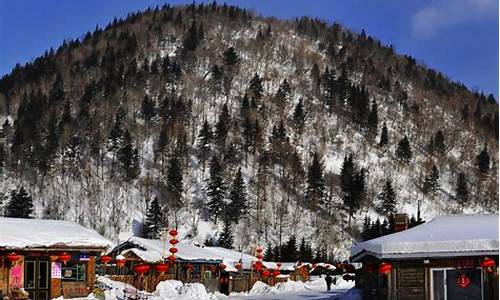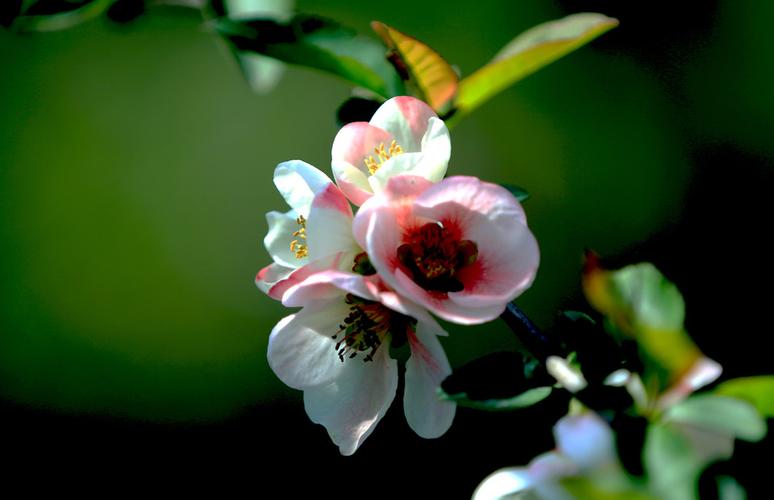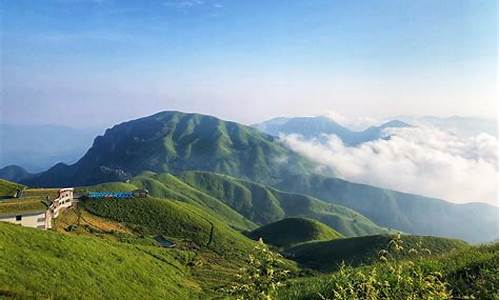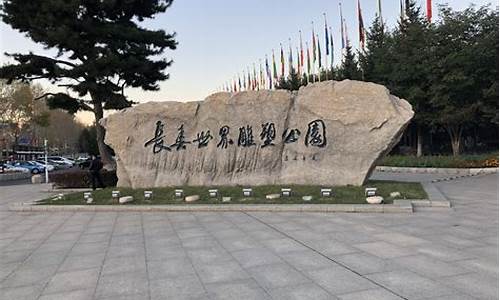您现在的位置是: 首页 > 游览路线 游览路线
瘦西湖景点英语_瘦西湖景点英语介绍
佚名 2024-05-29 人已围观
简介瘦西湖景点英语_瘦西湖景点英语介绍非常欢迎大家参与这个瘦西湖景点英语问题集合的探讨。我将以开放的心态回答每个问题,并尽量给出多样化的观点和角度,以期能够启发大家的思考。1.关于扬州的诗句英文2.描写家乡的优美句子英语3.瘦西湖的历史有多少4.瘦西湖的旅游路线关于扬州的诗句英文1.关于扬州的诗句,要英文翻译,速度速度T
非常欢迎大家参与这个瘦西湖景点英语问题集合的探讨。我将以开放的心态回答每个问题,并尽量给出多样化的观点和角度,以期能够启发大家的思考。
1.关于扬州的诗句英文
2.描写家乡的优美句子英语
3.瘦西湖的历史有多少
4.瘦西湖的旅游路线

关于扬州的诗句英文
1.关于扬州的诗句,要英文翻译,速度速度
The yellow crane tower of old, the fireworks yangzhou in March. The far all the blue sky shadow solitary, but see the Yangtze river flow over the sky.
故人西辞黄鹤楼,烟花三月下扬州。孤帆远影碧空尽,惟见长江天际流。
Shaw niang face difficult wins the tears, peach leaves eyebrows are easy to worry, all three distinct moon light, binary rogue in yangzhou.
萧娘脸下难胜泪,桃叶眉头易得愁,天下三分明月夜,二分无赖在扬州。
2.一篇描写扬州的英语作文不少于十句话The long history of the yangzhou gestates ShaoBo town, ShaoBo not only beautiful scenery, there are profound cultural,Mr. Zhu ziqing here spent his childhood .
ShaoBo has many cultural heritage,Many folk song was listed in the cultural heritage,you can go to listen to it, Here teems with lobster, Cooking method also are various,formed the lobster food market now popular feast.
This town, With the passage of time and decline, leaving ShaoBo lake of Folk songs.
3.用英语介绍扬州50个词Yangzhou, ancient Guangling, Jiangdu, Yangzhou and other, China's first batch of historical and cultural city, is located in the central part of Jiangsu Province, adjacent to the East and Yancheng, Taizhou City; south of Yangtze River, and Zhenjiang City, across the river; Southwest and Nanjing city is connected; in the Northwest and Huaian City and Anhui Province Chuzhou City to pick up soil is Nanjing metropolitan circle close cities and cities in the Yangtze River Delta urban agglomerations. State key engineering project of diverting water from the south to the North East water to. 译文: 扬州,古称广陵、江都、维扬等,中国首批历史文化名城,地处江苏省中部,东与盐城市、泰州市毗邻;南临长江,与镇江市隔江相望;西南部与南京市相连;西北部与淮安市和安徽省滁州市接壤,是南京都市圈紧密圈城市和长三角城市群城市,国家重点工程南水北调东线水源地。
4.求一篇英文关于瘦西湖的介绍稿Slender Western Lake (瘦西湖)Named after Hangzhou's famous West Lake, this long, narrow stretch of water which meanders through Yangzhou's western limits is a well-known scenic spot. A long bank planted with weeping willows spans the lake; at its midpoint stands a square terrace with pavilions at each of the corners and one in the center. Around the lake is a park in which are found several attractions: Lotus Flower Pagoda (Lianhua SO, a white structure reminiscent of the White Pagoda (Baita) in Beijing's Beihai Park; Small Gold Mountain (Xiao Jin Shan); and the Fishing Platform (Diaoyutai), a favorite retreat of the Qing emperor Qian Long. The emperor was so gratified by his luck in fishing at this spot that he ordered additional stipends for the town. As it turns out, his success had been augmented by local swimmers who lurked in the lake busily attaching fish to his hook.。
5.谁能给我一份扬州瘦西湖的英文介绍The Yangzhou Shouxi lake for our country famous lake in the botanical garden, is situated northwest Yangzhou, is south of Yangzi River's tourist attraction since the ancient times. Shouxi lake total area 103.7 hectares, the water surface area 49.9 hectares, are the country key scenic spot area Suchuan post - - Shouxi lake scenic spot area hard core slender winding lake roads, the string by the causeway spring the willow tree, four bridge misty rains, Xu Yuan, small Jinshan, breaks off, five pavilion bridges, Bai Ta, 24 bridges, the exquisite prostitutes' quarters, the bright scenic place, to look at spring the building, to recite both banks scenic spots and so on month teahouse, lake front corridor, cliff class sound of flowing water, static fragrant reading room, solemn natural elegant traditional Chinese painting long volume. The level of the lake is tortuous, goes toward the couple extension, the goddess waistband, the obsequious attitude is as if moving. When Qing Dynasty, Kangxi, Emperor Qianlong two once several times southern tour Yangzhou, the local tyrannical gentry struggled constructs the garden, then " abundance botanical garden, armor in the world " saying. " weeping simon poplar not breaking of contact remnant wu, neatly lined up Hongqiao draws dignified; Also melts metal a bowl, therefore should call makes Shouxi lake. “all previous dynasties poet literati likes Shouxi lake analogies as the delicate beautiful fascinating' winsome young girl, but distinguishes between the charming plentiful Hangzhou Xihu. From the scope says, Shouxi lake sub-Shi Gongci to the west, after Hongqiao, the causeway spring the willow tree, west the round wine-cup floating, small Jinshan, Bai Ta, five pavilion bridges, stops to Kuanyinshan, but Shouxi lake park from causeway spring willow tree to Kuanyinshan. The Shouxi lake span 4.3 kilometers, are distributing exquisitely many along the lake unique, is situated at the foot of a hill and beside a stream building. Shouxi lake botanical garden both some natural sceneries, and has the rich historical culture, the four seasons and the eight solar terms festival, the wind early morning end of the month, causes Shouxi lake to transform the infinite strange tastes. Shouxi lake's scenic spot after many year constructions, becomes especially charming varied. Especially treats to south of Yangzi River's spring scenery arrives, fireworks in March under Yangzhou, strolls with the Shouxi lake bank, but sees a several step willow tree, seems the green fog gentle moving, in addition the camellia japonica, the pomegranate, the cuckoo, the prunus persica and so on charming colored tree accompany, thought that Shu Juan is elegant, slender varied, all kinds rich in poetic and artistic flavor completely present in which.。
6.关于扬州的英语作文怎么写中考、高考将近,英语作文占到一定的比例,关于扬州的英语作文怎么写,扬州沃尔得国际英语为你支招。
关于扬州的英语作文在写作时要考虑到的不仅关于扬州的悠久历史,还有扬州的名胜风景。当然,也有可能考到的是和时事相关的扬州近年来的一些大事。比如去年的运河名城博览会、5月8日的扬州泰州机场的起飞等。
扬州沃尔得提醒家长,扩大孩子的知识面十分重要,对于时事的关心能够很大程度的帮助他们写好作文。了解当下发生的大事才能做到在写作的时候有话说,有东西写。
加大词汇量也是必要的,写作过程中会遇到的生词很多,平时注重积累,用一个小笔记本把平时遇到的自己不会写的单词记下来,再利用课余时间来加强背诵,必将有利于作文高分。
除此之外,语法的连贯性也是很重要的,要在作文中用到语法,增强文章的水准。但是太过生僻的句子禁用,弄得大家都不理解没有好处。
闲暇之余,可以利用免费英语水平测试网站,多做练习,时刻了解自己的英语水平,为自己制定更好的学习计划。
7.求英文ppt,介绍与扬州有关的如果楼主又不懂的地方上“抓鸟”网搜一搜就知道了= =Yangzhou (simplified Chinese: 扬州; former spellings: Yang-chou, Yangchow, Yang-chow; literally "Rising Prefecture") is a prefecture-level city in central Jiangsu Province, People's Republic of China. Sitting on the northern bank of the Yangtze River, it borders the provincial capital of Nanjing to the southwest, Huai'an to the north, Yancheng to the northeast, Taizhou to the east, and Zhenjiang across the river to the south. Historically it is one of the wealthiest of China's cities, known at various periods for its great merchant families, poets, painters, and scholars.HistoryThe first settlement in the Yangzhou area, called Guangling (广陵, Kuang-Ling) was founded in the Spring and Autumn Period. After the defeat of Yue by King Fuchai of Wu a garrison city was built 12 metres (39 ft) above water level on the northern bank of the Yangtze River c 485 BCE. This city in the shape of a three by three li square was called Hancheng.[1] The newly created Han canal formed a moat around the south and east sides of the city. The purpose of Hancheng was to protect Suzhou from naval invasion from the Qi. In 590 CE, the city began to be called Yangzhou, which was the traditional name of what was then the entire southeastern part of China.Under the second Sui Dynasty (581–617 CE) Emperor Yangdi (r. 604–617), Yangzhou was the southern capital of China and called Jiangdu upon the completion of the Jinghang (Grand) Canal until the fall of the dynasty. The city has remained a leading economic and cultural center and major port of foreign trade and external exchange since the Tang Dynasty (618-907). At one time many Arab and Persian merchants lived in the city but they were massacred in 760 CE during the An Shi Rebellion.During the Tang Dynasty many merchants from Korea's Silla Dynasty also lived in Yangzhou.The city, still known as Guangling, was briefly made the capital of the Wu Kingdom during the Five Dynasties and Ten Kingdoms Period.In 1280 AD, Yangzhou was the site of a massive gunpowder explosion when the bomb store of the Weiyang arsenal accidentally caught fire. This blast killed over a hundred guards, hurled debris from buildings into the air that landed ten li away from the site of the explosion, and could be felt 100 li away as tiles on roofs shook (refer to gunpowder article).Marco Polo claims to have served in Yangzhou under the Mongol emperor Kubilai Khan in the period around 1282-1287 (to 1285, according to Perkins). Although some versions of Polo's memoirs imply that he was the governor of Yangzhou, it is more likely that he was an official in the salt industry, if indeed he was employed there at all. Chinese texts offer no supporting evidence for his claim. The discovery of the 1342 tomb of Katarina Vilioni, member of an Italian trading family in Yangzhou, does, however, suggest the existence of a thriving Italian community in the city in the 14th century.During the Ming Dynasty (1368–1644) until the 19th century Yangzhou acted as a major trade exchange center for salt (a government regulated commodity), rice, and silk. The Ming were largely responsible for building the city as it now stands and surrounding it with 9 kilometres (5.6 mi) of walls.After the fall of Beijing and northern China to the Manchu in 1644, Yangzhou remained under the control of the short-lived Ming loyalist government of the so-called Hongguang Emperor, based in Nanjing. The Qing forces, led by Prince Dodo, reached Yangzhou in the spring of 1645, and despite the heroic efforts of its chief defender, Shi Kefa, the city fell on May 20, 1645, after a brief siege. A ten-day massacre followed, in which, as it was traditionally alleged, 800,000 people died. Shi Kefa himself was killed by the Manchus as well, after he refused to switch his allegiance to the Qing regime.The city's rapid recovery from these events and its great prosperity through the early and middle years of the Qing dynasty were due to its role as administrative center of the Lianghuai sector of the government salt monopoly. As early as 1655, the Dutch envoy Johan Nieuhof described the city (Jamcefu, i.e. Yangzhou-Fu, in his transcription) commented on the city's salt trade as follows:This Trade alone has so very much enrich'd the Inhabitants of this Town, that they have re-built their City since the last destruction by the Tartars, erecting it in as great splendor as it was at first.Famed at that time and since for literature, art, and the gardens of its merchant families, many of which were visited by the Kangxi and Qianling emperors during their Southern Tours, the Qing-era 。
8.在古代,扬州就因美丽而闻名天下在古代,扬州就因美丽而闻名天下
译:
1、In ancient times, Yangzhou was well known to (all over)the world for its beauty already.
for表示“因“
Be well know to 为。所熟知
all over the world 全世界
2、In ancient times, Yangzhou was famous for its beauty already, which was well known to (all over) the world.
Be famous for因。而著名
描写家乡的优美句子英语
瘦西湖(Slender West Lake)原名保障湖,位于江苏省扬州市城西北郊,总面积2000亩,水上面积700亩,游览区面积100公顷。瘦西湖本名保障湖。乾隆年间钱塘(杭州)诗人汪沆慕名来到扬州后将其唤作瘦西湖。瘦西湖在清代康乾时期已形成基本格局,有“园林之盛,甲于天下”之誉。瘦西湖主要分为14大景点,包括五亭桥、二十四桥、荷花池、钓鱼台等。
1988年瘦西湖被国务院列为“具有重要历史文化遗产和扬州园林特色的国家重点名胜区”。2010年被授予国家AAAAA级旅游景区。2014年,作为“中国大运河”遗产点之一的瘦西湖被列入世界文化遗产名录。2021年11月,瘦西湖景区进入第一批国家级文明旅游示范单位名单。
名称由来:
“瘦西湖”之名最早见于文献记载为清初吴绮《扬州鼓吹词序》:“城北一水通平山堂,名瘦西湖,本名保障湖。”乾隆元年(1736),钱塘(杭州)诗人汪沆慕名来到扬州,在饱览了这里的美景后,与家乡的西湖作比较,赋诗道:“垂杨不断接残芜,雁齿虹桥俨画图。也是销金一锅子,故应唤作瘦西湖”。
以上内容参考:百度百科-瘦西湖
瘦西湖的历史有多少
描写家乡的优美句子英语描写家乡的优美句子英语,句子是人们日常交流的基本表达方式在生活中,很多人都会通过说说来交流,句子能够帮助表达我们内心的想法,描写家乡的句子有很多,以下分享描写家乡的优美句子英语
描写家乡的优美句子英语11、家乡的风景优美,总能让我心旷神怡,让人流连忘返。
The beautiful scenery of my hometown always makes me feel relaxed and happy, and makes people linger.
2、在家的时候,城市是个梦;在城市的时候,家乡却飘在天空。
At home, the city is a dream; in the city, the hometown is floating in the sky.
3、远处只有一座残破的塔,没什么可看。可还是忍不住去眺望,去遐想,只因那个方向,有我的家乡。
There is only a broken tower in the distance. There is nothing to see. But I cant help looking and daydreaming because there is my hometown in that direction.
4、就像她离开家乡父母,一人在外地打拼一样。每个人都在努力地生活,用放弃换取幸福。
Just like she left her parents in her hometown and worked alone in other places. Everyone is trying to live and give up for happiness.
5、家乡如我的母亲,是用她的一草一木在哺育我们成长。
My hometown, like my mother, is nurturing us with her plants and trees.
6、儿行千里母担忧,风雨无常恐不休。加被添衣须自料,莫教牵念梦多愁。
The mother is worried about her childrens journey, and the wind and rain are changeable. Add clothes to be added, dont worry about dreams.
7、城市再美,也美不过故乡的云;回家的路再长,也长不过我们的思念。
No matter how beautiful the city is, it will not be the cloud of our hometown; no matter how long the way home is, it will not be our miss.
8、在我们离开家乡的那一刻,就注定了我们无法回头的青春。
At the moment when we left our hometown, we were destined to be young.
9、宁静的夜晚,浮想联翩,想念我的家乡,想念我的亲人,想念我的朋友!
Quiet night, imagination, miss my hometown, miss my family, miss my friends!
10、冉冉老将至,何时反故乡。神龙藏深泉,猛兽步高冈。狐死归首丘,故乡安可忘。
When will old general Ran Ran Ran turn against his hometown. The Dragon hides the deep spring, and the beast steps high. Foxes die in Shouqiu. Their hometown is safe to forget.
11、我终于又离开家乡来到了城市,像是一片从树上掉进水里的叶子。
I finally left my hometown and came to the city, like a leaf falling into the water from a tree.
12、家乡,什么事家乡?家乡是天才冲,野茫茫,风吹草低见牛羊。一抹晚烟荒戍垒,半竿斜月旧关城。
Hometown, what is hometown? Home is the genius of blunt, wild boundless, the wind grass low see cattle and sheep. A night smoke barren garrison base, half pole slanting moon old pass city.
13、上借天光,下接地气;清不清家乡水,亲不亲故乡人。
Borrow the light of the sky and connect to the earth; dont know the water of your hometown clearly, and dont be close to your hometown.
14、离开家乡多年,这次回来,深感物换星移,景物完全不同了。
I have been away from my hometown for many years. I feel that things are changing and the scenery is totally different.
15、从本质意义上,我们都是既失去家乡而又无法抵达远方的人。
In essence, we are all people who have lost their hometown and cannot reach far away.
16、驼铃轻晃,大漠芜荒,步履两行谁心伤。风沙茫茫,两鬓苍苍,胡琴声凉谁轻唱,何处是家乡。
Camel Bells sway gently, the desert is barren, walking two lines who is sad. The wind and sand are boundless, the temples are grey, the sound of Hu Qin is cool, who sings softly, where is home.
17、留不下心的城市,回不去家乡的身子,人和灵魂总有一个在路上。
If you cant go back to your hometown, there will always be one person and one soul on the way.
18、我能理解路上遇到的无知跟虚荣,他们都是我家乡的人,但我想去别的地看看。
I can understand the ignorance and vanity on the way. They are all from my hometown, but I want to see them elsewhere.
19、我好象记得,我回到家乡,我和朋友总是学你破门而入的样子。
I seem to remember that when I came back to my hometown, my friends and I were always learning the way you broke in.
20、虽然离开家乡十几年,可是家乡的一切都没有改变,家乡的天仍然那么蓝,家乡的水仍然那么清澈。
Although I have been away from my hometown for more than ten years, nothing has changed in my hometown. The sky in my hometown is still so blue, and the water in my hometown is still so clear.
描写家乡的优美句子英语21、家乡的街道整洁、宽阔、平坦。各种漂亮的汽车穿梭似的来来往往。街旁的高楼大厦拔地而起,鳞次栉比。超市和商场里的货物琳琅满目,看得人眼花了乱。
2、我热爱家乡,我赞美家乡,我更希望家乡在家乡人民辛勤劳动中越变越年轻,越变越美丽,成为一颗璀璨的明珠。
3、我的家乡除了风景如画、环境优美外,神秘的三星堆、古老的庞统祠、文化悠久的孔庙、清代文学家李调元故里、传统和现代相结合的石刻艺术墙等名胜古迹,每年都吸引了很多很多中外游客来德阳观光、游览。
4、陆良不仅风景优美,而且物产丰富,土特产很多。最出名的有:又酥又甜的麻依馓子;汁多味香甜的蜜香梨、小黄梨;肉质细嫩、味道鲜美的鲇鱼、金线鱼;营养丰富的乳饼等。
5、我们的家乡还有闻名中外的东坡赤壁,有历史悠久的青云塔、有举世瞩目的黄冈中学,家乡的旅游风景区还有很多很多,多的就像天上的繁星,数也数不清。
6、夏天来了,池塘里早已是一片绿色,荷花争相开放,洁白的花引得路人纷纷驻足。而小竹笋已长成高大的竹子,在风中轻摆着身体。
7、瞧!西湖旁,似金的落叶铺成的小道上,行人纷纷停下脚步,倾听着,秋姑娘那优美的歌声;凝视着秋天的图画。迎面扑来的阵阵秋风,不时掺杂着丝丝桂花的清香、菊花的清香和秋天的清香。
描写家乡景色的优美句子第二部分
8、炎热的夏天,往往使人们变得懒惰,而我们这些小孩子却一刻也闲不住,与伙伴们一起上山捕蝉捉蝴蝶,累了就到树木里休息,林里的景色更是美不胜收,那里有好多种小鸟栖息繁衍,还有许多漂亮的野花,蝴蝶和蜜蜂在空中翩翩起舞,到处鸟语花香。
9、当春燕鸣叫时,这山里的景色最迷人了。不信你瞧!那红、白、蓝、黄,还有叫不出是什么颜色的野花,会使你眼花缭乱,应接不暇了。成群的小蜜蜂在花丛中飞来飞去,忙着采蜜,花蝴蝶们扇动着翅膀翩翩起舞,伶俐的`小鸟在枝头上唧唧地唱个不停,给这寂静的山村带来了无限生机。还有那些不被人注意的小草,密密地挤在一块儿,你拥我挤,推来搡去,像一块柔软的大地毯铺在山坡上,踩在上去软绵绵的,躺在上面舒服极了,再大大咧咧地做个好梦,好美!
10、当夏蝉高唱时,遍地长满了冬瓜。你瞧,那茂密竹子里,挂满了一个个绿透了皮肤,它们形状不同。这时,我看在忙于剪冬瓜的农民伯伯、阿姨们,弯着腰,用手弄开冬瓜叶。哇!好大的冬瓜啊!农民们见了用手一抓,用剪子把它剪下来。真漂亮,又大又绿,收获肯定很多。他们剪了一个又一个,把剪刀都剪“断”了。
11、我的家乡不仅美丽,而且富饶。家乡盛产优质稻米和丰富的水产资源,因而有“渔米之乡”的美称。家乡的矿产资源也非常丰富,有元明粉、石油、天然气等矿藏。尤其是元明粉,在世界上都享有盛誉,所以,家乡的元明粉源源地运向外地,支援祖国建设。
12、扬州既有美丽的琼花,又有引人的旅游景点。瘦西湖的景点经多年修建,变得格外妩媚多姿。尤其是烟花三月下扬州之际,漫步瘦西湖畔,见几步一柳,好似绿雾般的柔媚动人,加之石榴、杜鹃等妩媚的花树陪伴,更觉窈窕多姿,万般的诗情画意尽现其中。一泓曲水宛如锦带,如飘如拂,时放时收,较之杭州西湖,另有一种清瘦的神韵。诗人汪沆在诗中写道:“也是销金一锅子,故应唤作瘦西湖。”
13、我的家乡在济南,这是一座古老和美丽的城市。济南因为“家家泉水,户户垂柳”的美景,一直有“泉城”的美誉。其中七十二名泉里,趵突泉、珍珠泉、黑虎泉、五龙潭四大泉群最负盛名。
14、我们再说说兵山广场吧,兵山广场是个吸引人的大型的游乐场所。不管男女老少,晚上都爱上广场来走走。广场有扭秧歌的,他们用大鼓和唢呐来伴奏,鼓声咚咚,唢呐哒哒。老奶奶们跳着秧歌,观看的人非常多,好不热闹。广场还有去写大字的,他们写出的每个笔画都有收笔,回笔,顿笔,写出来的字如龙飞凤舞,非常漂亮。
15、啊,故乡!读万卷书怎么也读不完你的美丽,行万里路怎么也走不完对你的畅想。你的美丽和善良早已打入我的行囊,相伴我四海为家。
16、你知道我家乡最美的一处景物吗?让我来告诉你,那就是——鼓浪屿。当你乘着船,在海面遨游的时候,你就会发现鼓浪屿其实是个岛屿。白白的海浪伴随着你来到这个美丽的岛屿,风迎面扑来,带着阵阵海咸味。这是为什么呢?那是贝壳的咸味,那是一颗被串在绳子上的珍珠,散发着大海的气息。然后,我将带你去看看“百鸟园”。“百鸟园”里的鸟可多了,有白鹭,丹顶鹤,黑天鹅、鹦鹉……各种不知道名字的鸟向你招呼。而且,有演出表演等,准能让你大饱眼福!最后,我不得不带你去看看闻名中外的日光岩。等你爬上日光岩,肯定已经大旱淋淋了。不过,从上面看,还可以看到整个鼓狼屿哩!你瞧:郁郁葱葱的树木环绕着红砖白瓦的房子,一个个富有各国特色的建筑尽收眼底。偶尔,还能隐隐约约地听到悠扬的琴声呢!这就是我家乡的一处景物,那么清幽,那么飘逸美丽,你们快来饱览这美丽的风景。
17、我热爱家乡,我赞美家乡,我更希望家乡在家乡人民辛勤劳动中越变越年轻,越变越美丽,成为一颗璀璨的明珠。
18、我的家乡风景优美。空气格外清新。春天,小草从大地妈妈的怀抱中探出嫩绿的小脑袋。被风一吹,它们就像喝醉的小伙子一样。在小草的旁边种着许许多多的花:茉莉花、菊花、夜来香等等。其中最美丽的就是夜来香。夜来香的叶子翠绿欲滴,形状还想爱心桃似的,不仔细看,还以为叶子破了洞呢!夜来香刚长出来的花骨朵儿,样子像小花生似的,十分可爱!**的小花渐渐展开了笑脸。风姑娘用她那轻飘的衣袖拂过,夜来香们摆动着柔软的身躯,随风舞动,是那么美丽,是那么自然啊!
19、家乡的人变了,地变了,交通也方便了,电话什么的都有了。可是什么让这些变了呢?我正百思不得其解,这时,两个妇女在谈笑风生。一个说:“还是政府好,我不重男轻女了。我现在才发现,原来女孩儿也是那么棒!”“我的女儿也是呀……”我恍然大悟,原来这是政府的功劳哇!我想:假若到了未来,这里一定变得更美好!
20、故乡的秋雨像姑娘手中的绣花线,上上下下不得空闲的翻飞。一会儿绣出了柿子树上的红灯笼,一会儿绣出了地里的金地毯,一会儿不知怎么的又绕到了橘树上,于是绿枝上便挂上了明黄的绣球。故乡的秋雨虽说是姑娘的眼泪,可也并不撒娇任性。一阵雨过后,仿佛友人向她道了歉似的,这不她一抹脸,天还是湛蓝的天,太阳还是欢喜的太阳。
描写家乡的优美句子英语31、家乡从春花(华)到秋实,从嫩绿到金黄,无不散发着迷人的芬芳,从山的青翠到水的澄澈,从云的洁白到风的清凉,故乡的原野永远的演绎着最美的篇章。
2、家乡的河,总是湍急而宽广的河水,用你甘露般的河水是辛勤的浇灌着禾苗,偶尔来一把兴风作浪。
3、家乡那蓝的天是你们驰骋的疆场,雨后彩虹是云的霓裳,风的呼唤总是吹拂着故乡原野的胸膛。
4、家乡的春天,柿花飘香,纷纷坠落,小孩们一粒一粒捡起来,或用柳条,或用线绳穿成串,晾干,嘴嚼起来,甜滋滋,美佳佳,异常可口新鲜的柿花也可入口,只是带点涩味。
5、家乡的盛夏,树荫森森,青色的柿子果实累累,淘气的小男孩则潜入田野、树下,偷着采下柿子,埋入土中,待五天过后,再行刨出,青涩难咽的柿子就奇迹般变得甘甜可口。
6、家乡的深秋,霜叶泛红,层林尽染。漫山遍野的柿树,殷红如霞,灿烂若枫。桔红色的柿子,更是艳丽夺目。此时的柿子略熟而未熟,不软不硬,正是采摘的好时节。
7、冬天的家乡,山河依然妖娆好看,枯枝败叶映衬着火红的柿子,山山岭岭,星星点点,依然如枫一样夺目,像霞一样灿烂。
8、家乡的冬天,踱步树下,铺垫着厚厚的、红红的柿叶,软绵绵,异常舒适。举目远眺,村村鸡犬相闻,炊烟袅袅,山河壮美,鸿雁高飞,绿野似锦。
9、家乡那片金**的油菜花田,绿色绒毯般的草原,整齐如画的麦浪,还有湛蓝湛蓝的天空,这个充满神奇魅力的地方,无时无刻都令人身心气爽,令人回味无穷。
10、家乡的景色很迷人,有别与江南小镇的气息,青海夏凉秋爽是理想的避暑胜地,每到夏天有很多旅客都上青海旅游避暑,灿烂的青海文化又给这凉爽宜人的夏季平添了无数魅力。
11、家乡的田地,穿过一大片青翠的麦田和绿茵茵的草坡,金灿灿的油菜田便呈现如今眼前。
12、篱落疏疏一径深,树头花落未成阴,儿童急走追黄蝶,飞入菜花无处寻,但正是这千千万万微不足道的花枝,造就了家乡夏天轰轰烈烈的大美,铺就了家乡四季锦绣灿烂的前程。
13、家乡的夏天,一阵微风,塘里就荡起一层层的涟漪,犹如一条白色的飘带,蜿蜒于一片片轻轻摇曳的芦苇林和连绵起伏的稻穗之中。
14、家乡的傍晚,如果你漫步来到塘畔,那不计其数的鱼儿,从水中跃起来抢食,那声音犹如远处传来的二十万响的鞭炮声。
15、家乡的秋,是沉甸甸的,是丰收的季节那沉甸甸的稻子,那颗粒饱满的花生、那又大又红的地瓜,把田野装扮得格外的美。
16、家乡秋天的大地就像一幅五彩缤纷的华丽地毯,牡丹、康乃馨、月季等多种色彩绚丽鲜花在浓露之下晶萤闪耀,田野和园林的景色从来没有像秋天这样的美过,这样令人心荡神摇。
17、家乡的秋,是凉爽的,炎热的夏天已在立秋中悄悄地溜走了,阳光也似乎比夏天要温和得多,不再象夏天那么哆哆逼人了,不再像炎夏时那怒气冲冲,让人望而生畏。
18、家乡的秋,是多彩的,是绚丽多彩的季节,没有些微的**点缀在夏季的色泽中间,大地呈现的主色调是绿色,而秋天的色彩却是金**的。
19、家乡的景色很是迷人,如果说春天曾像一个俏丽、欢乐,企望将来的女子,那末秋天就似乎是一个温柔、稳重,追忆往事的金黄头发的女子。
20、家乡的傍晚,湖光与绿色交相辉印分不清芦苇和荷花与湖面的界限,在暮色压境的时候,荷花与芦苇荡间就可依稀看到飘出一缕缕薄薄的雾气,那些雾气浓缩成一弯弯乳白色幕帐将远方湖上的渔船桅帆映衬得犹如海市蜃楼般仙境。
瘦西湖的旅游路线
名园简介
瘦西湖(Slender West Lake),位于扬州市北郊,现有游览区面积100公顷,1988年被国务院列为“具有重要历史文化遗产和扬州园林特色的国家重点名胜区”。
瘦西湖景区 现有:御码头、西园、 冶春园、绿杨村、卷石洞天、西园曲水、四桥烟雨、虹桥、长堤春柳、叶园、徐园、长春岭、 琴室、木樨书屋、棋室、月观、梅岭春深、湖上草堂、绿荫馆、吹台、水云胜概、莲性寺、 凫庄、五亭桥、白塔晴云、二十四桥景区等景点。
在瘦西湖“L”形狭长河道的顶点上,是眺景最佳处。
由历代挖湖后的泥堆积成岭,登高极目, 全湖景色尽收眼底。
文人雅士看中此地,构堂叠石代有增添,至清代成为瘦西湖最引人处。
有“ 湖上蓬莱”之称。
近人巧取瘦西湖之“瘦”,小金山之“小”,点明扬州园林之妙在于巧“借” :借得西湖一角,堪夸其瘦;移来金山半点,何惜乎小。
岭上为风亭,连同岭下的琴室、月观, 近处的吹台,远景近收,近景烘托,把整个瘦西湖景区装扮的比“借”用的原景多了许多妩媚之气。
://shouxihu/
瘦西湖(Slender West Lake),位于扬州市北郊,现有游览区面积100公顷左右,1988年被国务院列为“具有重要历史文化遗产和扬州园林特色的国家重点名胜区”。瘦西湖景区 现有:御码头、西园、 冶春园、绿杨村、卷石洞天、西园曲水、四桥烟雨、虹桥、长堤春柳、叶园、徐园、长春岭、 琴室、木樨书屋、棋室、月观、梅岭春深、湖上草堂、绿荫馆、吹台、水云胜概、莲性寺、 凫庄、五亭桥、白塔晴云、二十四桥景区等景点。在瘦西湖“L”形狭长河道的顶点上,是眺景最佳处。由历代挖湖后的泥堆积成岭,登高极目, 全湖景色尽收眼底。文人雅士看中此地,构堂叠石代有增添,至清代成为瘦西湖最引人处。有“ 湖上蓬莱”之称。近人巧取瘦西湖之“瘦”,小金山之“小”,点明扬州园林之妙在于巧“借” :借得西湖一角,堪夸其瘦;移来金山半点,何惜乎小。岭上为风亭,连同岭下的琴室、月观, 近处的吹台,远景近收,近景烘托,把整个瘦西湖景区装扮的比“借”用的原景多了许多妩媚之气。 ***游瘦西湖,最好从御码头上船。
御码头是当年大清皇帝南巡时登舟的地方,但在今天看来,它几乎已没有什么皇家气派。从这一层层石级走向河边的时候,你也许根本不觉得自己行走在万乘之君专用的御道上,却觉得仿佛是从喧嚣的都市里来到了郊野的村庄。但当你迈起你的左脚,落下你的右脚的时候,你其实已经跨越过了历史的时空。时间是多么无情,它把皇家的浓脂艳粉洗去,而让当年戒备森严的御码头变成了老百姓随意散步的乡间小道。
游瘦西湖,必须坐画舫,画舫是瘦西湖的特色。当你乘上画舫,游程就开始了。
在画舫上,你会看到岸边有几间草房和水榭,从窗户里飘出蒸饺、干丝、蟹黄包子、三丁包子等维扬茶点诱人的缕缕香气。这是久享盛名的"冶春茶社",当年朱自清先生曾在此对维扬茶点赞不绝口。
你又会看到岸边的长廊短亭之间、绿树红花之中,有无数珍禽在争鸣斗妍,有三五游人在驻足观赏。这是久负美名的"绿杨村"。对于久居城市的人来说,你此时会感到一种少有的松弛、闲适,一种与大自然的亲近、融洽。
而这才是瘦西湖的序幕。
随着游船的行进,岸边的树木愈来愈多,湖面愈来愈开阔,空气也愈来愈新鲜。在水面上飘荡的微风里,有些水草或小鱼的腥气,可以让你在瞬间消除胸中的郁闷。你在绿荫掩映之间,仿佛看见了城墙的堞影,也许会情不自禁吟起王渔洋的名句:"绿杨城郭是扬州"。
忽然,在荡漾的碧波上,一座长虹似的拱桥飞架于两岸。
你能想到,这原来是清代文人举行"红桥修禊"的所在吗?据历史记载,王士禛、孔尚任、卢见曾等人曾分别在此大会诗人,留下了无数华美的诗章。金农、郑燮、黄慎等八怪名家,也经常在此吟诗作画,流连忘返。
如果时间允许,你真应该在此舍舟登岸,仔细寻找一下王渔洋、孔东塘、卢雅雨、金冬心、郑板桥、黄瘿瓢这些先贤的踪迹。
杨柳依依的"长堤春柳",相传是因为一对名叫长堤、春柳的青年男女的美丽爱情而得名的。春天的时节,这里一棵柳树夹一树桃花,充满了温馨的情意。湖上飘舞的柳絮,使人感到扑朔迷离,大概可以为李白诗句"烟花三月下扬州"中的"烟花"做一个注释吧?
出了徐园,就看到一座红色的小桥--小红桥。在青山绿水之间,使用如此鲜艳的颜色也许是画家所忌讳的。然而,在瘦西湖的碧波之上,横卧着这样一座红色的小桥,不但不使人感到俗气,反而使人感到分外娇艳动人。这也许正是当年扬州造园者的大胆和独特之处吧?
当你用轻盈的步履走过小红桥,便来到了一处四面环水的地方--"小金山"。小金山的得名,是因为它很像镇江的金山,不过体积太小了一些。和"瘦西湖"的名字一样,"小金山"的名字教人深切地感受到扬州园林秀美的风格。
从小金山向东望去,可以看到花木葱茏之间矗立着一座古色古香的楼台。那是"四桥烟雨"。
四桥烟雨旧名叫黄园,是清代盐商黄氏兄弟所建的别墅之一。黄氏兄弟四人,个个腰缠万贯,又特别喜欢建造园林。他们在扬州所建的园林,分别叫做易园、十间房花园、容园、别圃。单是老二一人,就建了几所花园,四桥烟雨便是其中之一。之所以命名为"四桥烟雨",是因为在此登楼远眺,能够在烟雨朦胧之中,隐隐约约看到四座桥:大虹桥、长春桥、春波桥、莲花桥,也有人说能看到玉版桥和小虹桥。总之,登一楼而能看数桥,这种奇妙的构思可以说把借景的艺术发挥到了极致。扬州盐商虽然腰缠万贯,但是其中不乏雅人。他们爱金钱,又爱园亭、爱诗文、爱风雅,这正是他们值得今人怀念的地方。
从小金山向西望去,只见一道长堤伸入湖中,长堤尽头有一座古亭--"吹台"。
二十四桥景区,景区位于瘦西湖西段,莲花桥至平山堂的水道转折处。清乾隆间景称"春台明月",嘉庆后毁圮。但地形地貌、河湾港汊犹存。
1986年,国家和地方拨款246万元,按《扬州画舫录》记载和故宫博物馆珍藏的扬州著名画师袁耀所绘《邗上八景.春台明月》册页、乾隆《南巡盛典图》等有关史料,结合地形地貌现状,设计恢复方案,于1987年10月动土兴建。景区占地约7公顷,为一组古典园林建筑群,包括新建的二十四桥、玲珑花界、熙春台、十字阁、重檐亭、九曲桥,后又续建望春楼、栈桥、静香书屋等。其布局呈"之"字形屏列,构造旷奥收放,抑扬错落,各面转折对景都是一幅山水画卷,成为了"乾隆水上游览线"的一处胜景。湖两岸长廊依云墙伸展,陆路与水道并行。整个景区在体现"两堤花柳全依水,一路楼台直到山"的意境中起着承前启后的作用。 公交直达 镇杨城际公交 平山堂-焦山公园 4路 瘦西湖-江都市 5路 汤汪乡政府-公交三公司 6路 鸿福家园-连运小区 17路 友谊广场-江海学院 27路 友谊广场-国际珠宝城 29路 友谊广场-汊河镇 29路(晚) 友谊广场-汊河镇 37路 瘦西湖-高旻寺 55路(晚) 东花园-友谊新村 61路 汽车西站- 平山堂停车场 62路 瘦西湖- 苏北医院分院
好了,今天关于“瘦西湖景点英语”的话题就到这里了。希望大家通过我的介绍对“瘦西湖景点英语”有更全面、深入的认识,并且能够在今后的学习中更好地运用所学知识。









